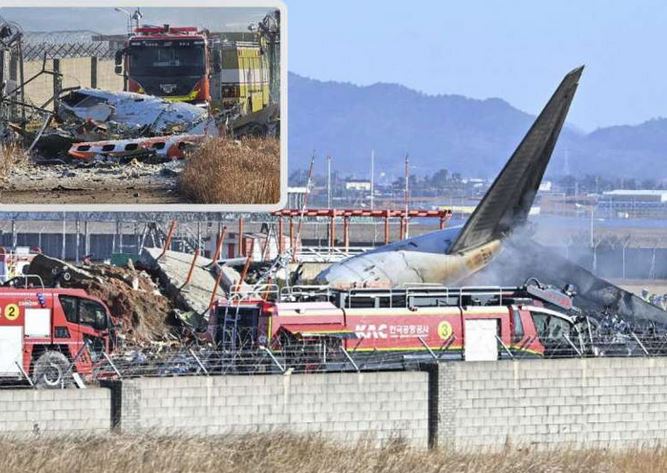The recent plane crash in South Korea, which resulted in the deaths of 179 people, has raised serious questions about aviation safety, particularly regarding the concrete wall near the runway. Experts have raised concerns about the role of this wall in the crash, as they believe that if the wall had not been there, the outcome could have been different. Let's take a detailed look at all the important aspects of the incident:


Incident Details:
The crash occurred on December 29, 2024, at Muan International Airport in South Korea. The Jeju Air plane, after running off the runway, collided with a concrete wall, which immediately caught fire, killing all 179 people on board. The footage of the crash clearly shows the plane running off the runway and hitting the concrete wall, causing the fire. Experts have pointed out that such walls are unusual because typically, there are no such walls at the end of the runway.Importance of the Concrete Wall:
According to South Korea's Ministry of Transport, similar concrete structures have been installed at some other airports in the country and abroad. These structures typically have a navigation system that aids in landing. However, aviation experts argue that it is unusual to have such a concrete wall at the end of the runway. Experts' Opinions:- David Learmount (Aviation Expert): David Learmount stated that if the concrete wall had not been there, the plane would likely have stopped at the end of the runway, and most of the passengers could have survived. He also noted that the plane's landing was "flapless/gearless," meaning it had a level wings configuration, which is typically safe in such situations.
- Christian Beckert (Lufthansa Airline Pilot): Christian Beckert called the concrete wall "unusual," stating that normally there are no such walls at the end of a runway. He emphasized that such structures at the end of a runway can increase the severity of accidents.
- Chris Kingswood (Pilot with 48 years of experience): Chris Kingswood explained that runways should have "weakened" obstacles within a certain distance, meaning that if a plane hits such obstacles, they should break or absorb the impact to minimize damage. He believed that the presence of the wall caused the damage, and if the wall had not been there, the plane could have stopped.

